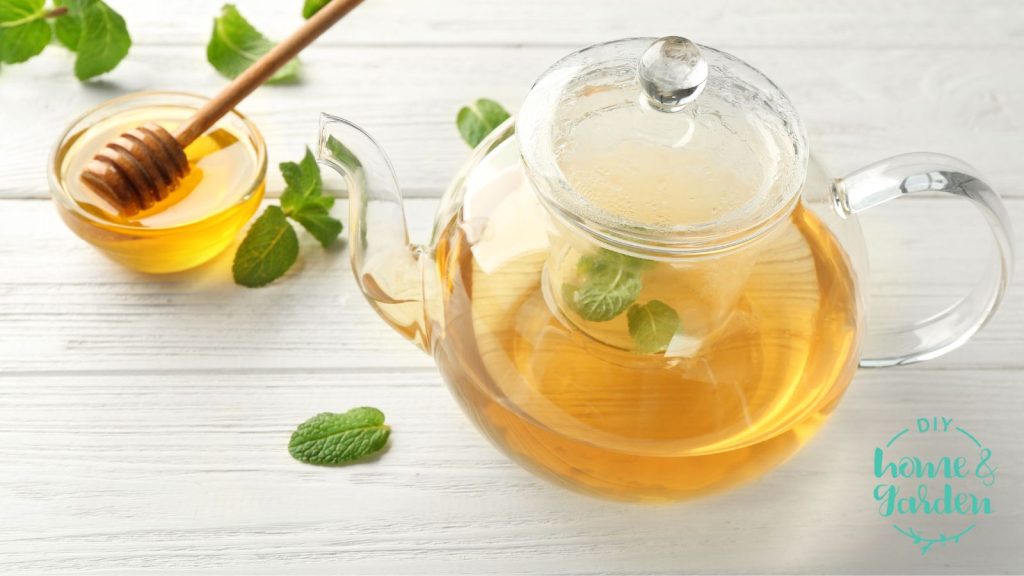Enjoy fresh lemon balm for a relaxing retreat.
There’s something truly magical about a cup of warm, fragrant tea, especially after a long, stressful day. And for me, lemon balm tea is the ultimate elixir of calm.
I remember one particular evening, when the weight of the world seemed to be pressing down on my shoulders. I retreated to my kitchen garden, snipping a handful of fresh lemon balm leaves. As I brewed the tea, the soothing aroma filled the air, instantly calming my senses.
Sipping the hot brew, I felt a sense of peace wash over me. The gentle, citrusy flavor was both refreshing and comforting. It was as if the plant’s calming properties were being infused into every cell of my body.
Table of contents
Why You Should Give Lemon Balm Tea a Try
Disclaimer: This information is intended for general knowledge and informational purposes only, and does not constitute medical advice. It is important to consult with a healthcare professional for any health concerns or before making any significant changes to your diet or lifestyle.
Beyond my personal experience, lemon balm has been used for centuries to promote relaxation and reduce stress. Here’s why you might want to consider adding it to your wellness routine:
- Stress Relief: Lemon balm is known for its ability to reduce anxiety and promote relaxation.
- Improved Sleep: The calming effects of lemon balm can help you fall asleep faster and enjoy a more restful night’s sleep.
- Cognitive Benefits: Some studies suggest that lemon balm may improve cognitive function, including memory and attention.
- Digestive Aid: Lemon balm can help soothe digestive issues such as bloating and indigestion.
How to Make Lemon Balm Tea

Ingredients:
- Fresh lemon balm leaves
- Hot water
- Honey or other sweetener (optional)
Instructions for Lemon Balm Tea:
- Harvest Your Lemon Balm: Pick fresh lemon balm leaves from your garden or purchase them from a local market.
- Prepare the Tea:
- Loose Leaf Method: Place a handful of fresh lemon balm leaves in a tea infuser or directly into a mug.
- Tea Bags: If you have lemon balm tea bags, use one bag per cup.
- Steep the Tea: Pour hot water over the leaves or tea bag.
- Steeping Time: Steep for 5-10 minutes, or longer for a stronger flavor.
- Strain and Sweeten: Strain the tea to remove the leaves. Add honey or another sweetener to taste, if desired.
Dehydrating Lemon Balm for Year-Round Enjoyment
To savor the calming benefits of lemon balm year-round, consider dehydrating your harvest. Here’s how:
Oven Dehydration Method:
- Preheat: Set your oven to the lowest temperature possible, ideally around 170°F (77°C).
- Prepare Leaves: Wash and pat dry your lemon balm leaves. Remove any stems.
- Arrange on Tray: Spread the leaves evenly on a baking sheet lined with parchment paper.
- Dehydrate: Place the tray in the oven, leaving the door slightly ajar to allow moisture to escape.
- Monitor and Adjust: Check the leaves every few hours. They should be dry and brittle, but not burnt. The drying time can vary depending on your oven’s temperature and humidity.
- Cool and Store: Once dry, remove the leaves from the oven and let them cool completely. Store them in an airtight container in a cool, dark place.
Electric Dehydrator Method:
- Prepare Leaves: Wash and pat dry your lemon balm leaves. Remove any stems.
- Arrange on Trays: Spread the leaves evenly on the dehydrator trays.
- Set Temperature: Set the dehydrator to the lowest temperature setting, usually around 135°F (57°C).
- Dehydrate: Turn on the dehydrator and let it run until the leaves are completely dry and brittle. This can take 8-12 hours or longer.
- Store: Once dry, remove the leaves from the dehydrator and store them in an airtight container in a cool, dark place.
Tips for Dehydrating Lemon Balm:
- Thin Layers: Avoid overcrowding the trays to ensure even drying.
- Check Regularly: Monitor the drying process and adjust the temperature or drying time as needed.
- Store Properly: Store dried lemon balm in an airtight container to preserve its flavor and aroma.
So, the next time you’re feeling overwhelmed, why not brew a cup of lemon balm tea and let its soothing magic work its way into your life?
Want more herbal tips and tricks? Follow me on MeWe for daily doses of natural wellness.


